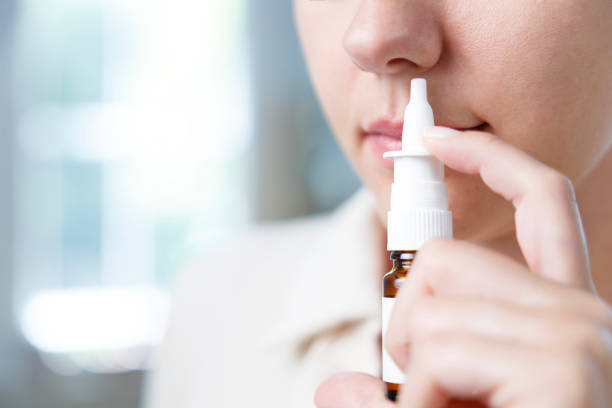USP Delivered Dose Uniformity Testing of Inhalers
The United States Pharmacopeia (USP) Delivered Dose Uniformity Test is a critical procedure for ensuring the quality, safety, and efficacy of inhalation products. This test measures how consistently each individual dosage unit delivers its active ingredient to the respiratory tract. The uniformity of delivered doses directly impacts the effectiveness of therapeutic outcomes and patient compliance.
The test follows USP chapter Chapter 1069, which specifies the methodology for determining delivered dose uniformity. The procedure involves delivering a fixed volume of air to a test device containing multiple dosage units, then measuring the amount of active ingredient released from each unit. A high degree of variation in these amounts can indicate issues with production consistency or potential safety concerns.
The testing process is crucial for pharmaceutical manufacturers as it helps identify any inconsistencies that could affect the reliability and performance of inhaler products. Compliance with USP standards ensures that products meet regulatory requirements, enhancing trust among healthcare providers and patients alike.
For quality managers and compliance officers, this test provides a robust framework to monitor production processes and ensure product consistency. R&D engineers can use it as part of their development cycle to identify areas for improvement in formulation or device design. In procurement, understanding the importance of delivered dose uniformity helps select suppliers who adhere to stringent standards.
Inhalation products are designed to deliver precise amounts of medication directly into the lungs. Variability in dosing can lead to under- or over-treatment, which may result in suboptimal therapeutic effects or adverse reactions. By ensuring delivered dose uniformity, manufacturers uphold patient safety and maintain product efficacy.
During the testing process, several factors must be carefully controlled: temperature, humidity, air flow rate, and the number of actuations per unit. Specimen preparation involves ensuring that each dosage unit is intact and free from any defects that could affect the test results. Once prepared, the samples are placed into a device designed to simulate inhalation conditions.
Instrumentation used in this test typically includes precision scales capable of measuring minute amounts of active ingredient accurately. Modern systems often incorporate automated sampling capabilities to reduce human error and increase efficiency. Reporting must detail the percentage of units falling within acceptable limits, along with any outliers that require further investigation.
Benefits
- Enhanced Patient Safety: Ensures consistent delivery of medication to minimize the risk of ineffective treatment or adverse reactions.
- Regulatory Compliance: Meets stringent USP standards, facilitating smoother interactions with regulatory bodies.
- Patient Satisfaction: Consistent product quality leads to higher patient satisfaction and adherence to therapy.
- Cost Efficiency: Identifies issues early in the production process before large-scale manufacturing begins.
Why Choose This Test
Accurate measurement of delivered dose uniformity is essential for ensuring product efficacy and safety.
The USP test provides a standardized approach that can be universally applied across different inhalation devices.
It offers insights into production variability, allowing manufacturers to implement corrective actions promptly.
Competitive Advantage and Market Impact
- Market Leadership: Consistent product performance can enhance brand reputation and market share.
- Innovation: Identifying variability early allows for continuous improvement in product development cycles.
- Customer Trust: Compliance with USP standards builds confidence among healthcare professionals and patients.





